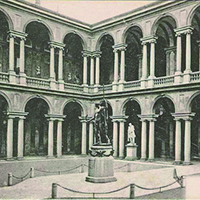GIOVAN BATTISTA MORGAGNI E IL DIBATTITO FRA MEDICINA RAZIONALE E MEDICINA EMPIRICA
 Smart Citations
Smart CitationsSee how this article has been cited at scite.ai
scite shows how a scientific paper has been cited by providing the context of the citation, a classification describing whether it supports, mentions, or contrasts the cited claim, and a label indicating in which section the citation was made.
Giovanni Battista Morgagni is considered the father of pathological anatomy. His contribution can be contextualized in the extraordinary development of anatomy between the seventeenth and the eighteenth centuries, because along this period anatomy became the most important among the natural sciences. A new pathology based on anatomy was possible thanks to the mechanistic perspective which characterized this science during the seventeenth century, in particular through the work of Marcello Malpighi, whom Morgagni considered as his master. The approach of Malpighi and other ‘iatromechanists’ was widely debated: supporters of mechanisms and empiricism, as well as supporters of the Ancients, or Hippocratic-Galenic medicine, and of the Moderns, or ‘Neoteric’ medicine, were opposed and interlaced. The anatomo-clinical method of Morgagni can be fully understood only by being contextualized within this debate.


 https://doi.org/10.4081/incontri.2021.727
https://doi.org/10.4081/incontri.2021.727
